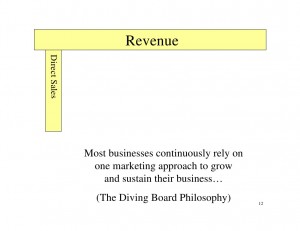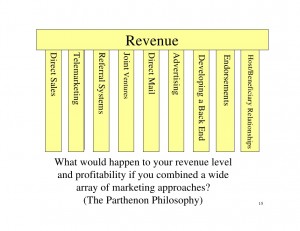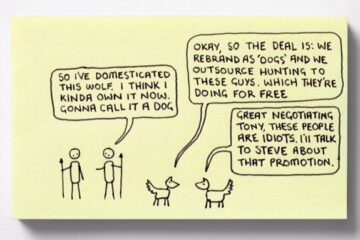Last week, I was watching a speech by Charlie Munger, Warren Buffet’s right hand man.
In it, Munger said:
“One idea [investors] use is one Benjamin Graham borrowed from engineering, which is the concept of a margin of safety.
In other words, factoring all the probabilities, you want a margin of safety in what you’re doing. And that’s a very good concept when you’re designing a bridge, and it’s a very good concept when you’re making an investment. You want something will handle the mischances from life and still do well.”
Great advice. And, given your business is the biggest investment you’ll ever make – whether it’s money, time, hope … let’s think about to build a margin of safety into it.
Businesses designed to fail
10 years ago – when everyone thought SEO was the be-all and end-all – I warned that, if the only way you can get customers is through SEO, then you don’t have a business … all you have is Google rankings.
Some people listened. Some didn’t. Those who did are more likely to still be around today.
But it goes beyond free traffic. I’ve known businesses that depended on Yellow Pages ads or newspaper ads. Neither of these is anywhere as effective as it used to be.
Online paid ads aren’t immune either. Adwords had its own cull when the ads disappeared from the right hand side. And recent stats from America suggest Facebook users are visiting the site 44% less often. So there are fewer ad impressions on that as well.
So, if history tells us we can’t rely on any single traffic source, then the solution must be …
Jay Abraham’s Parthenon Principle
Marketing guru, Jay Abraham came up with what he calls “The diving board v the Parthenon”. Back in the 1990s, he explained it like this…
“I believe you build your success foundation on pillars. I’m going to call it the diving board versus the Parthenon analogy. Most businesses I look at would be built as a diving board.
Imagine a diving board with only one post supporting the board — the board is your foundation.
The post is the method or the mechanism depend on to generate all your sales and sustained growth.
What is a diving board by nature, what does it do? It goes down. If the one post that you’ve built your business on either gets saturated or stops being effective, you’re in trouble.
So, basically my goal for a client or someone attending my seminar is to systematically build their business on multiple pillars that support it.
One pillar can be whatever they do now: the next pillar will be another alternative form of selling or of generating business or of lead generating. It can be that one facet of your business is direct selling, another facet telephone marketing, another facet joint ventures or strategic alliances, and still another can be contingency or shared revenue selling with advertising mediums like radio stations — and the list goes on and on.
If one of these pillars goes out, it’s a nagging inconvenience that may eliminate 10 percent of your business, but it will not debilitate or terminate your ability to exist.
I approach every pillar as what I’ll call an innovative profit center. You should never do anything that doesn’t produce a profitable outcome for you or that doesn’t basically dovetail together and reinforce everything else you do.”
Why this is even easier today
That was back in the 1990s (he still teaches this principle today). But, thanks to the internet, it’s even easier today. Your Parthenon could be:
- SEO
- PPC
- Display/content networks
- Selling via Amazon (even if you don’t sell physical products)
- Referral systems/invite a friend programmes
- Facebook ads
- Twitter ads
- Linked in
- Affiliate programmes and joint ventures
And that’s assuming it’s all online. I know businesses that are doing very well from direct mail, radio, and PR. Or, if you’re in B2B and have trade magazines, they can be great ways to get leads.
It’s all about finding marketing channels that make sense for your business… and, if you want to stay in business, lots of them.
All the best,
Steve Gibson
P.S. Next year will be my 13th year as a marketing consultant. That means I’ve seen dozens of different models – B2B and B2C – using all sorts of marketing channels. So, if you’d like help building your Parthenon, and think it makes sense to lean on my experience, rather than trying to do it alone, drop me an email.





